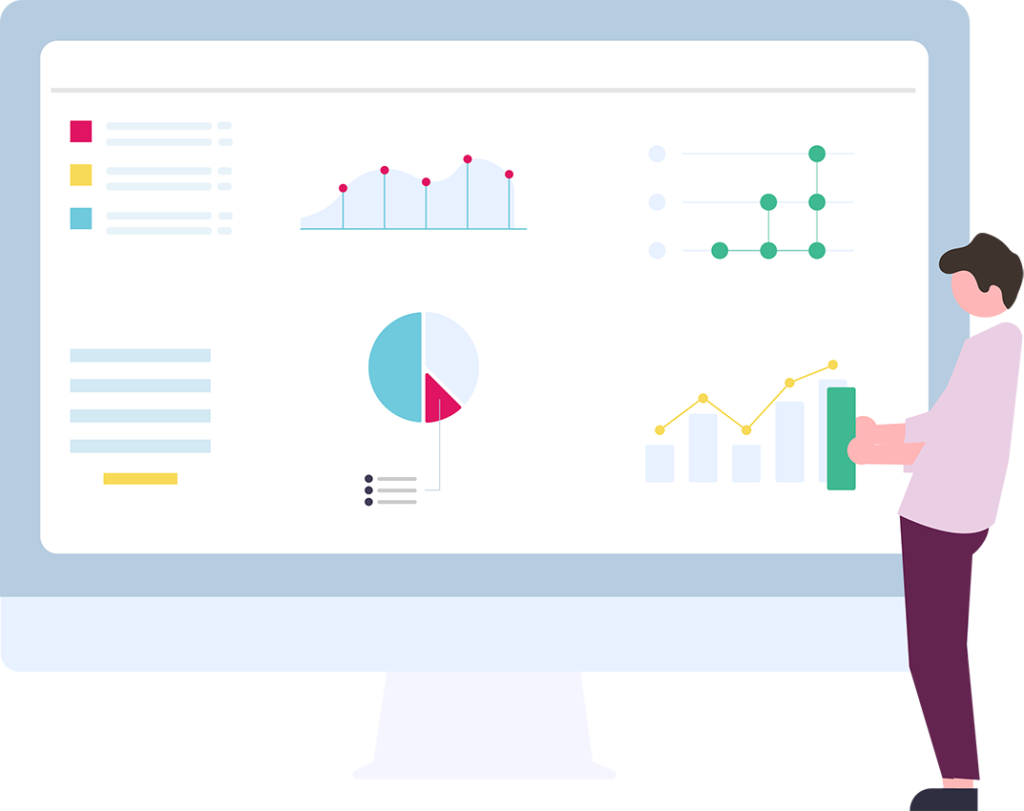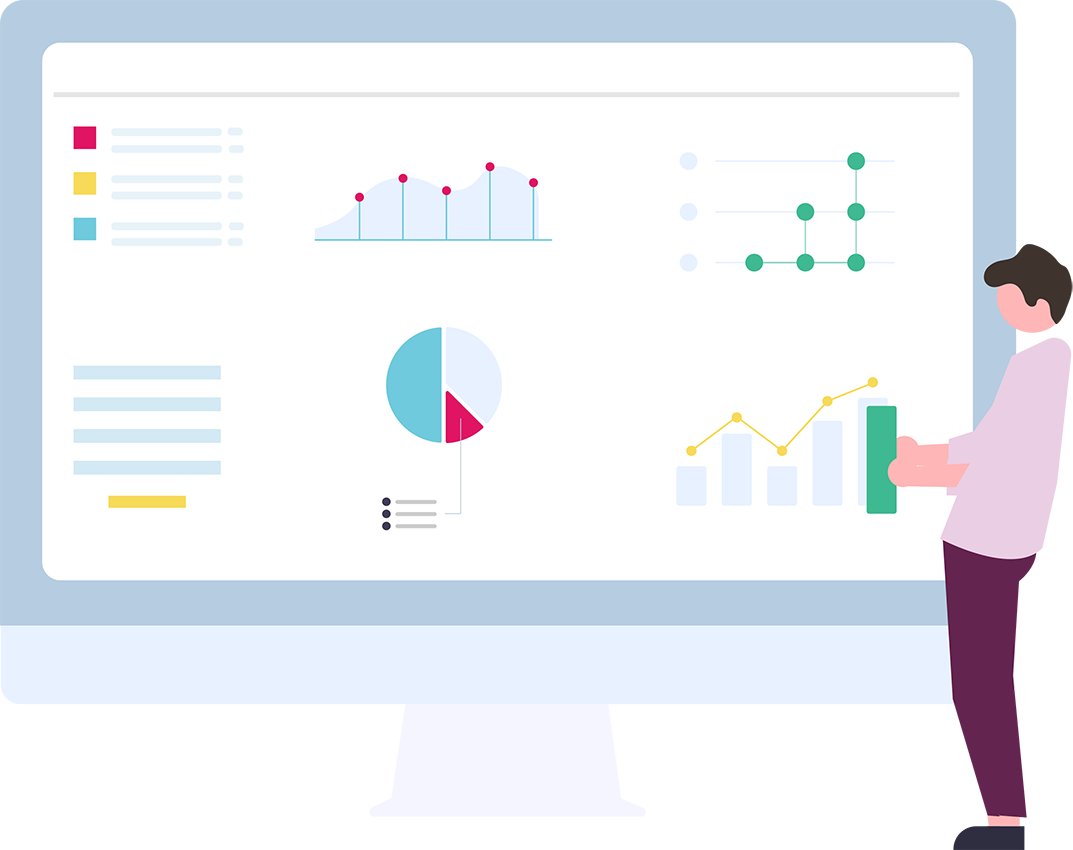
Excel, an omnipresent reporting tool
Excel is undoubtedly the most widely used reporting tool in companies, especially within business departments. And this is true whether or not a BI tool (Qlikview/Tableau/Power BI...) is present within the IT department. Historically, business departments have always extracted and manipulated data. This data can come from different internal or external databases, or even directly from existing BI tools, in order to build a customized reporting.
In fact, the tool has decision-making functionalities that users are often satisfied with, not without having been frustrated beforehand by certain limitations of the tool. In fact, when we talk to some of them and they compare it with the BI tools they know (either in-house or on the market), there's no doubt about it: the BI tool is a step above in terms of reporting.
Of course, in this article, the capabilities of Excel cannot be questioned. They are almost infinite as soon as one acquires an expertise on the tool but it remains above all a spreadsheet, of great quality certainly, but a spreadsheet all the same.
Multiple limitations in terms of reporting
The limits are indeed multiple in terms of reporting and can differ depending on the interlocutors.
"Painful volume management".
A pricing manager, a master in the use of Excel, reported to me that he often encountered performance problems. His files regularly "grind" because of the volume or complex macros. In the worst case his file "crashes and closes".
" Limited or complicated analytical capabilities to exploit "
On the other hand, a sales manager told me that he could not create interactions between his graphs on the same dashboard.
On the other hand, less sophisticated users are confronted with difficulties in designing reports, which they find complex and cumbersome. For example, a product manager told me that simply creating a histogram was not always easy. As soon as he wants to display several indicators and/or several dimensions, Excel is no longer intuitive. This often results in time wasting that he would have liked to do without.
Its analyses are also limited. For example, it does not have the possibility of digging into the data by starting with a macro analysis and going back down the hierarchy (product family, sub-family, product) in a simple manner.
Ranking values in a histogram to determine which agencies sell the best or which products perform best is also tedious. For each graph, he must order his data source...
These difficulties are only examples of the problems raised. They have the merit of highlighting the limits of Excel in the BI domain.
"Building and updating reports at the expense of analysis."
In terms of time dedicated to reporting, the observation is regularly the same. We spend more time building, maintaining and updating our reports than we do analyzing them. On a company scale, the time wasted in the production/maintenance of Excel dashboards can be considerable. To realize this, you only need to calculate the time dedicated each week by the number of employees involved. This, without forgetting the risk of error linked to this manual work. Dedicating more time to high value-added tasks, such as analysis, is therefore a major challenge when implementing a true BI tool, through the automation that it allows.
"Excel does not promote/ease the transmission of messages..."
On the management side, the issues are slightly different but they are similar... Some managers regret the overuse of tables. This is facilitated and encouraged by the capabilities of Excel in this area. This often makes the first analyses longer and more complex. They regret that their teams use tables for top-down analysis. Exploring raw data with a table containing countless columns and indicators will, in absolute terms, allow you to analyze everything. But it will also drown you in a mass of information that is far too large. Identifying in detail what is wrong with a data table is important. However, it is essential to make your first analyses with adapted restitutions, macros and advanced analysis functionalities.
In the same vein, some managers feel that the messages are not getting through properly. When presenting results, operational people may tend to want to rely on fairly fine levels of detail, essentially using tables. But the manager(s) need clarity in the messages. It is therefore necessary to rely on simple and meaningful visuals and to unfold, for example, a story telling. The charts can always be available, in reserve, if details are needed during the meeting. Defining, and therefore limiting ourselves to, essential indicators and clear, readable and intelligible reports, also means thinking about what makes sense in our activity. This work will allow the operational staff to focus their actions on what, ultimately, constitutes the essence of their activity.
The Power BI alternative alternative for reporting
Have all these issues led business managers to look for an alternative? The historical use of Excel tends to think not as well as the reactions to these issues.
We search on forums to find help in the constitution of his report. We complain about files that no longer respond, we wait, we reopen our file, but we never try to proceed otherwise. For many years, this was justified by the absence of an alternative at a similar cost. But at present, we can talk more about a lack of knowledge of the market.
Because, yes, there is now a product that will allow you to perform advanced and relevant business reporting in an intuitive way. This tool is called Power BI Desktop.
Power BI is Microsoft'sbusiness intelligence tool. It allows you to connect to many data sources. Then you can build your own reports, taking care to transform/format your data if necessary. The tool's capabilities promote the design of ergonomic dashboards that are pleasant to read and allow for relevant analysis. In most cases, this is achieved without having to deal with volume issues. Conveying a message thus becomes more natural. Even if pivot tables are still possible, visual representations are at the heart of the tool.
Operational staff, managers, data analysts, you will all find it interesting to discover and use Power BI Desktop.
To learn more and discover the capabilities of the tool with a demonstration, please come and attend our conferences on the subject or contact us.

